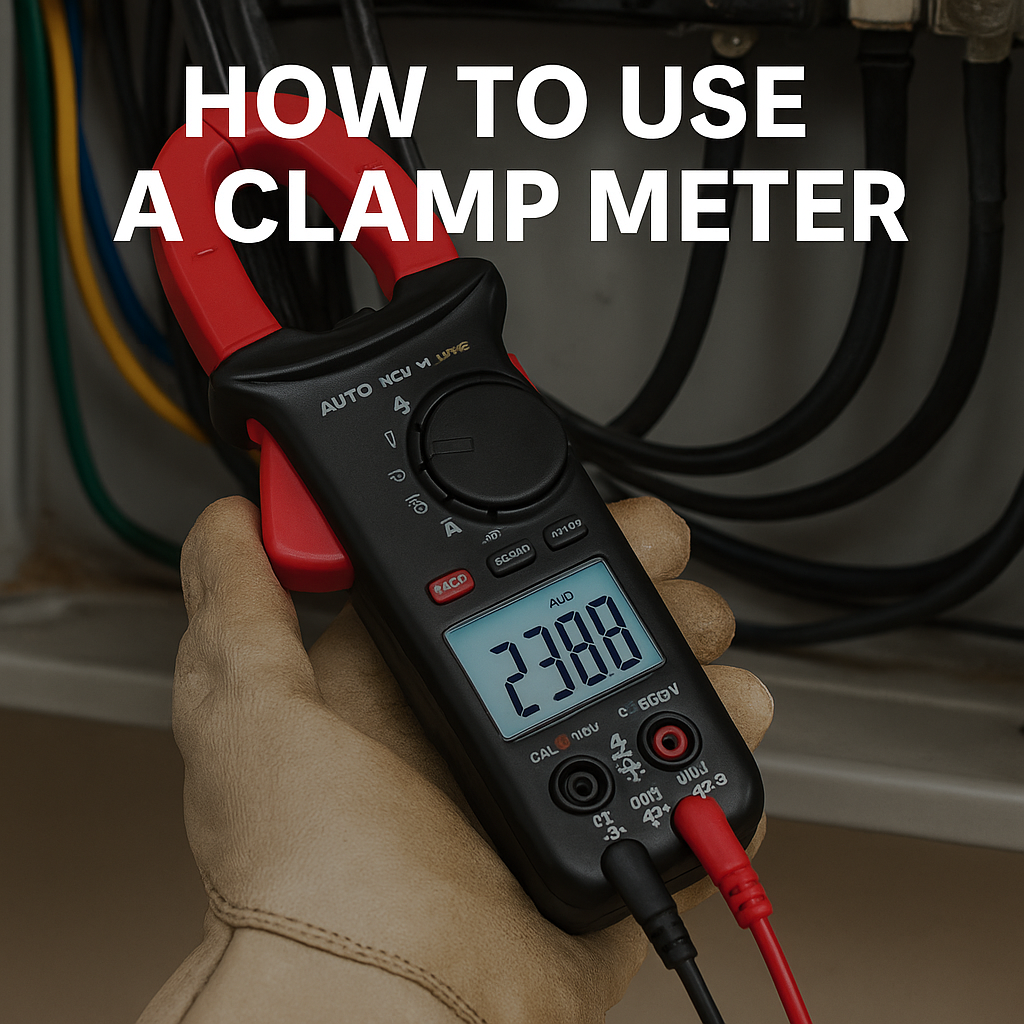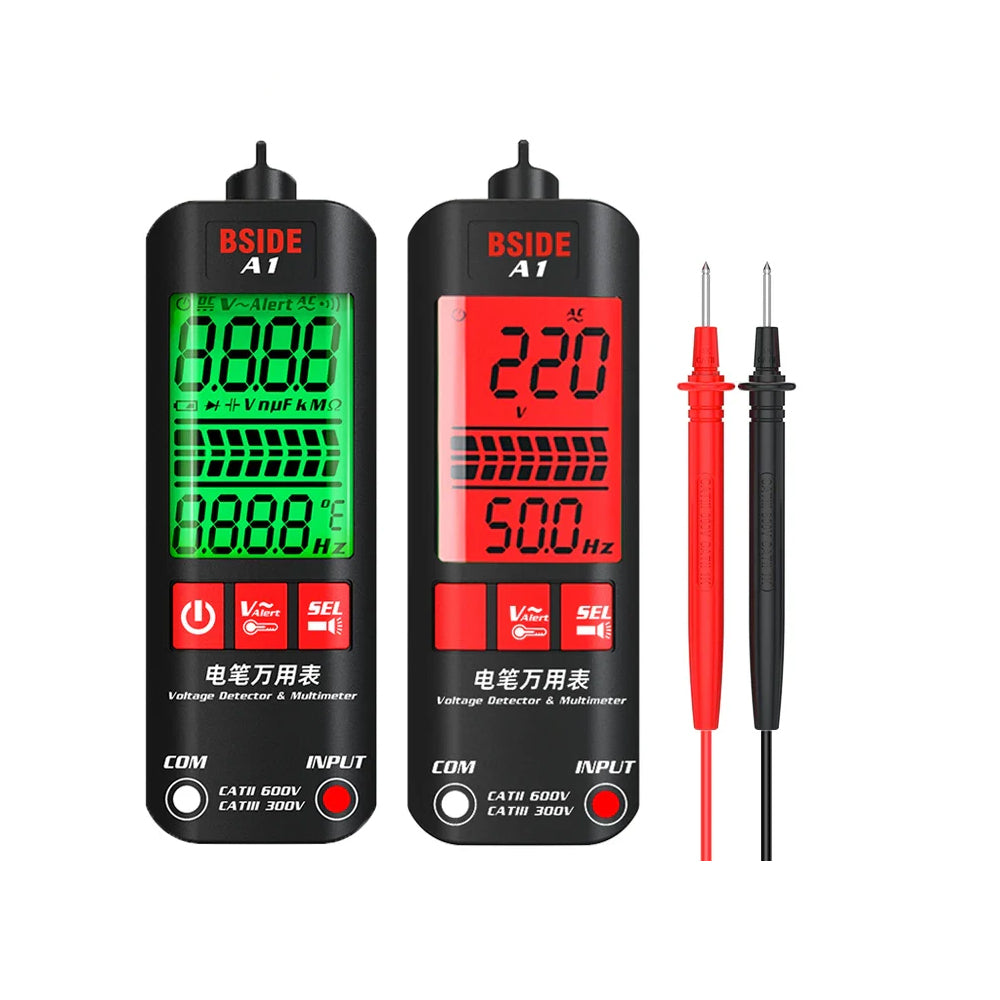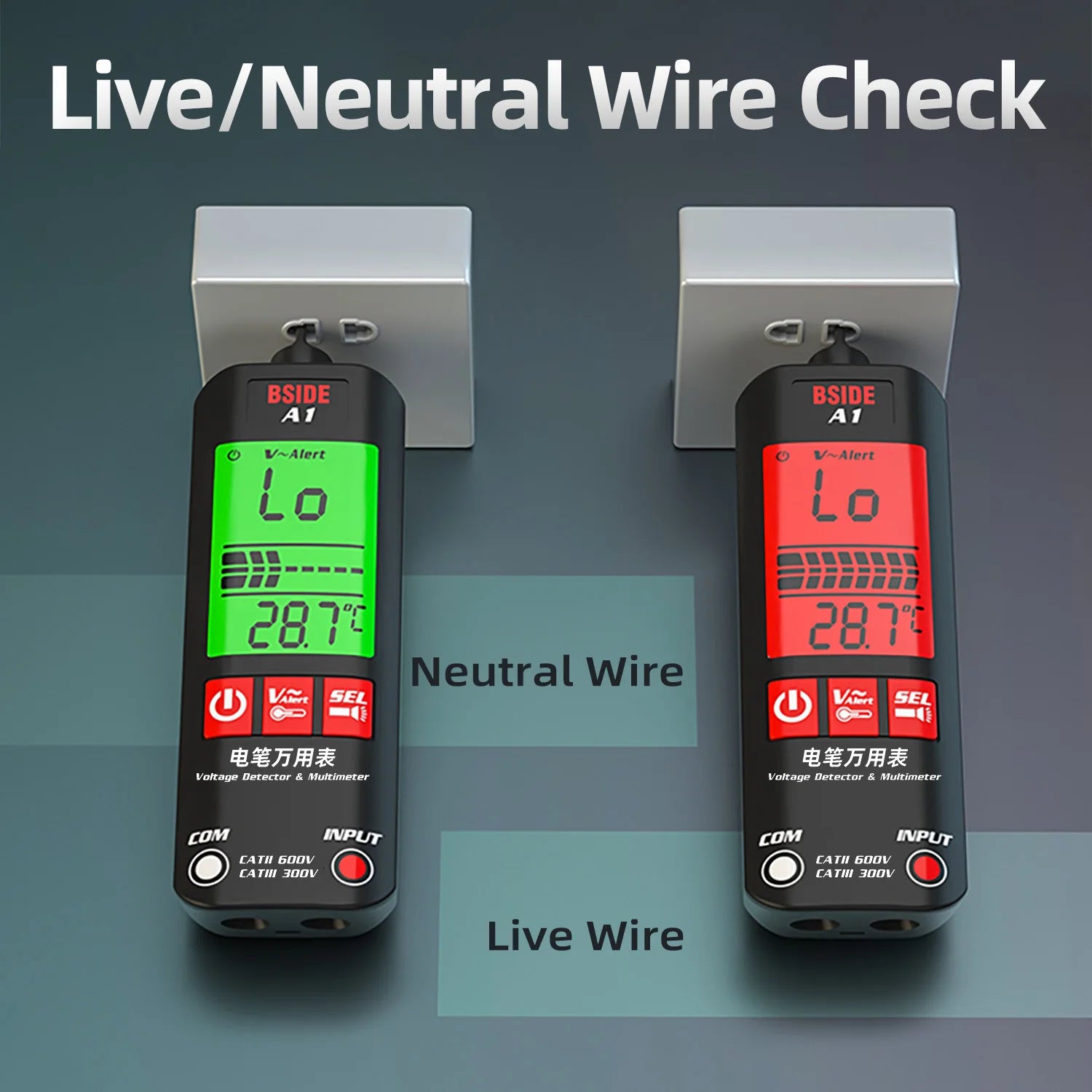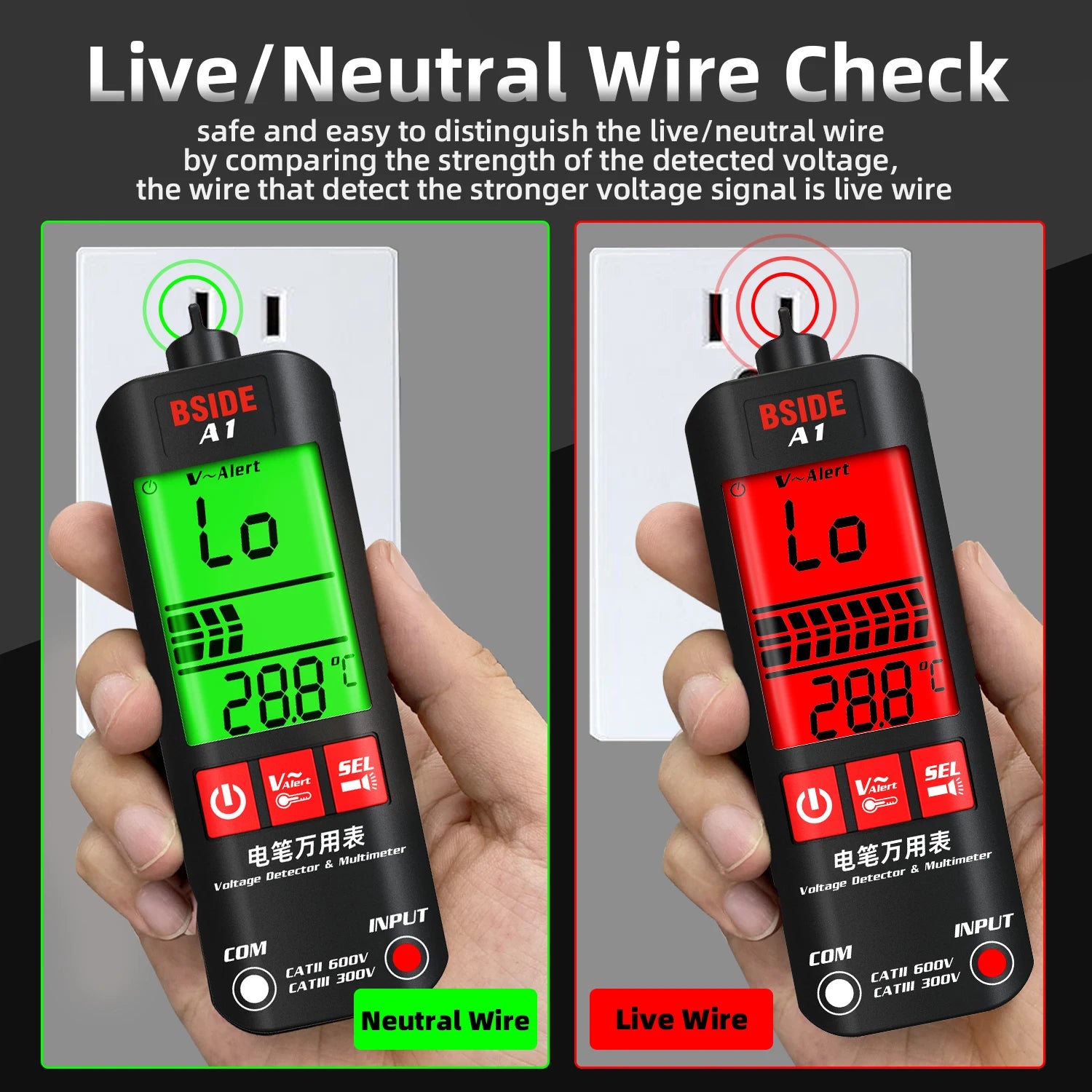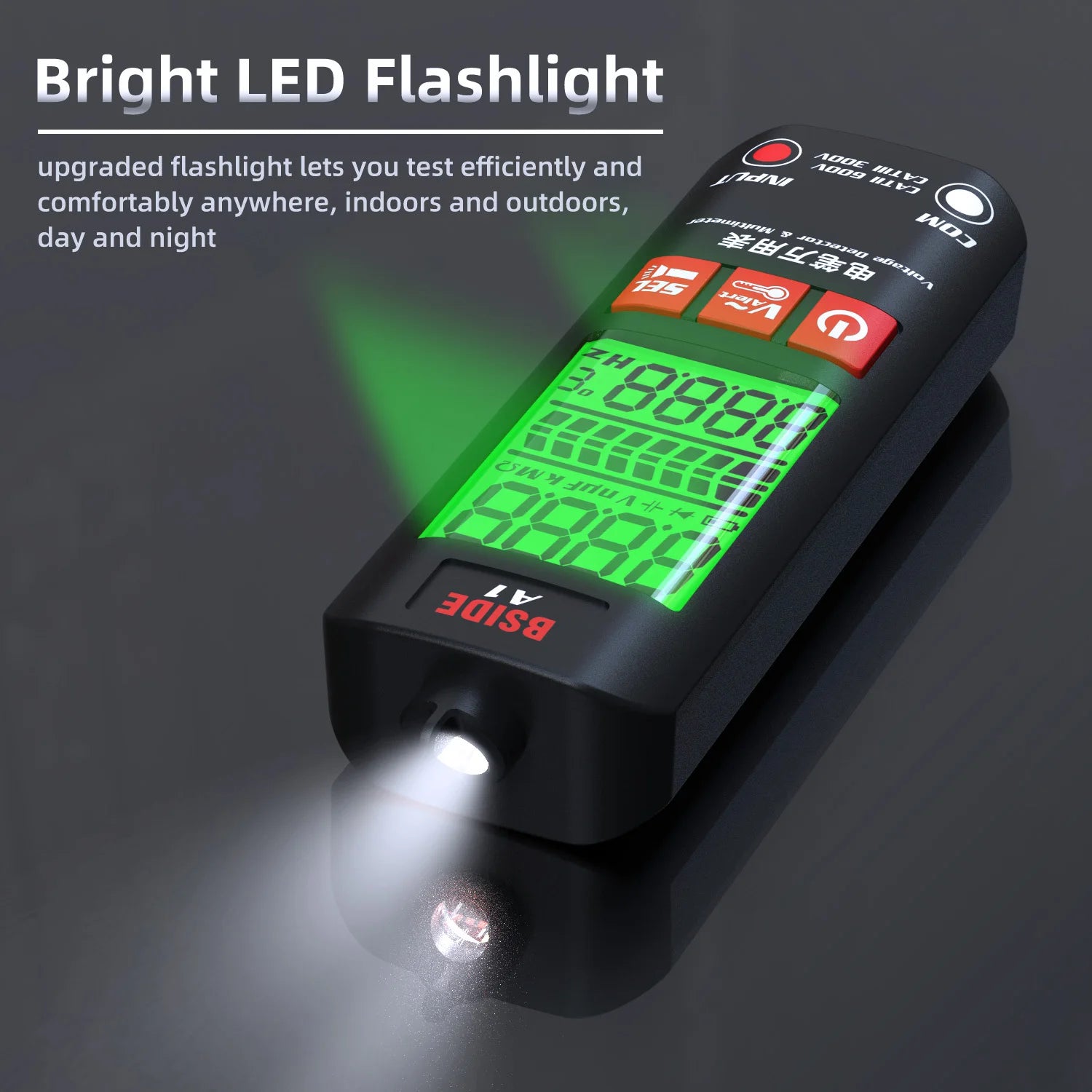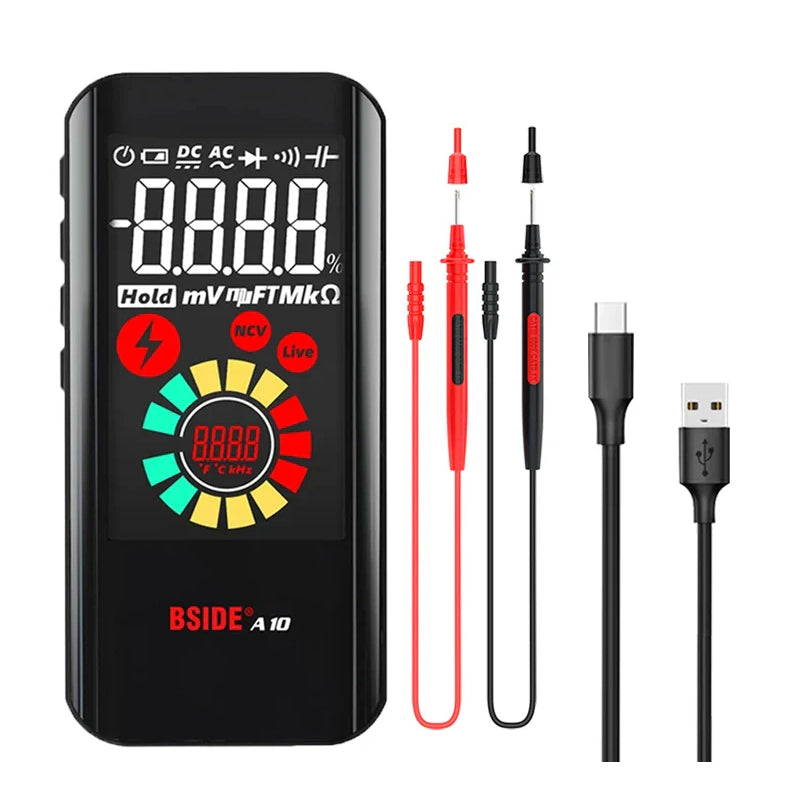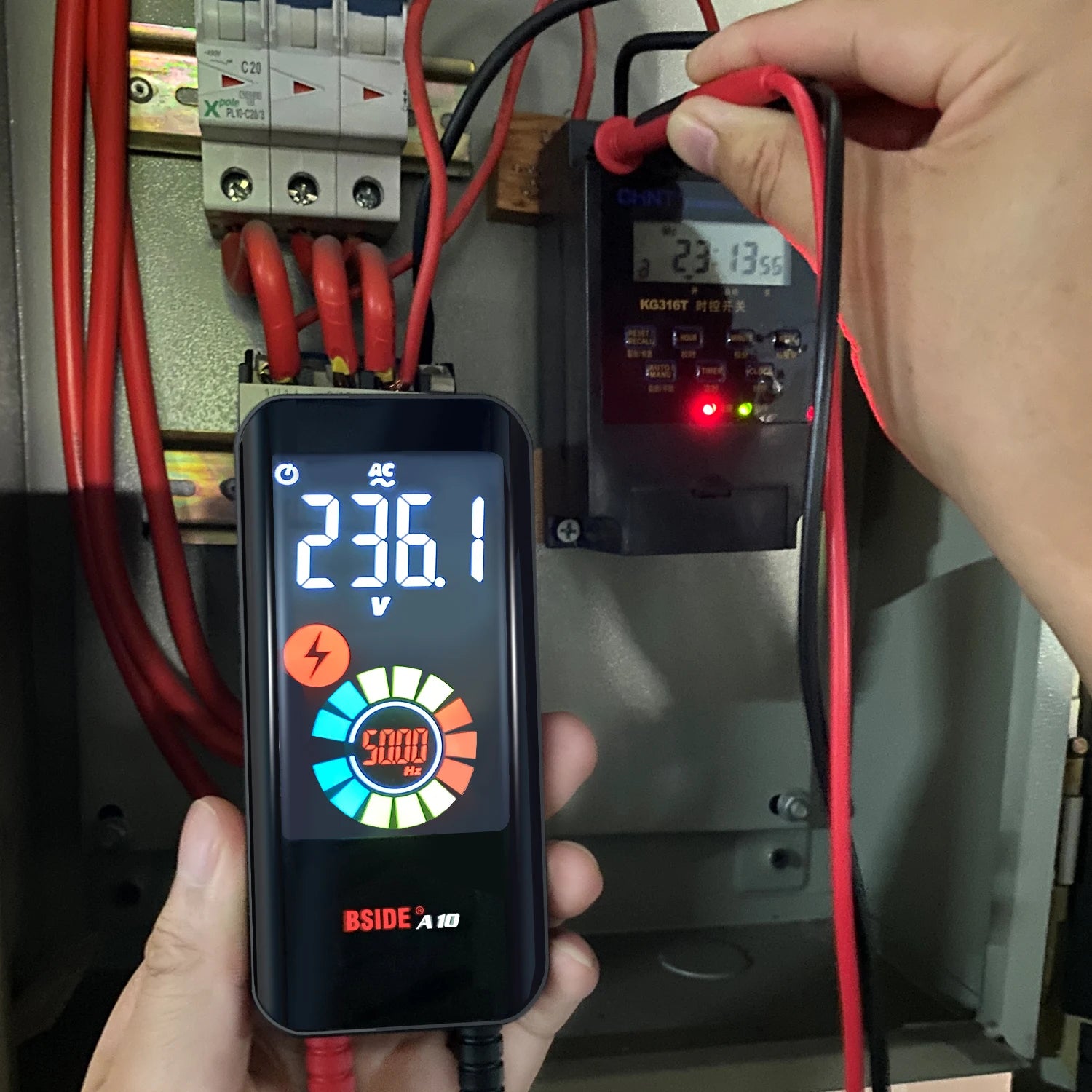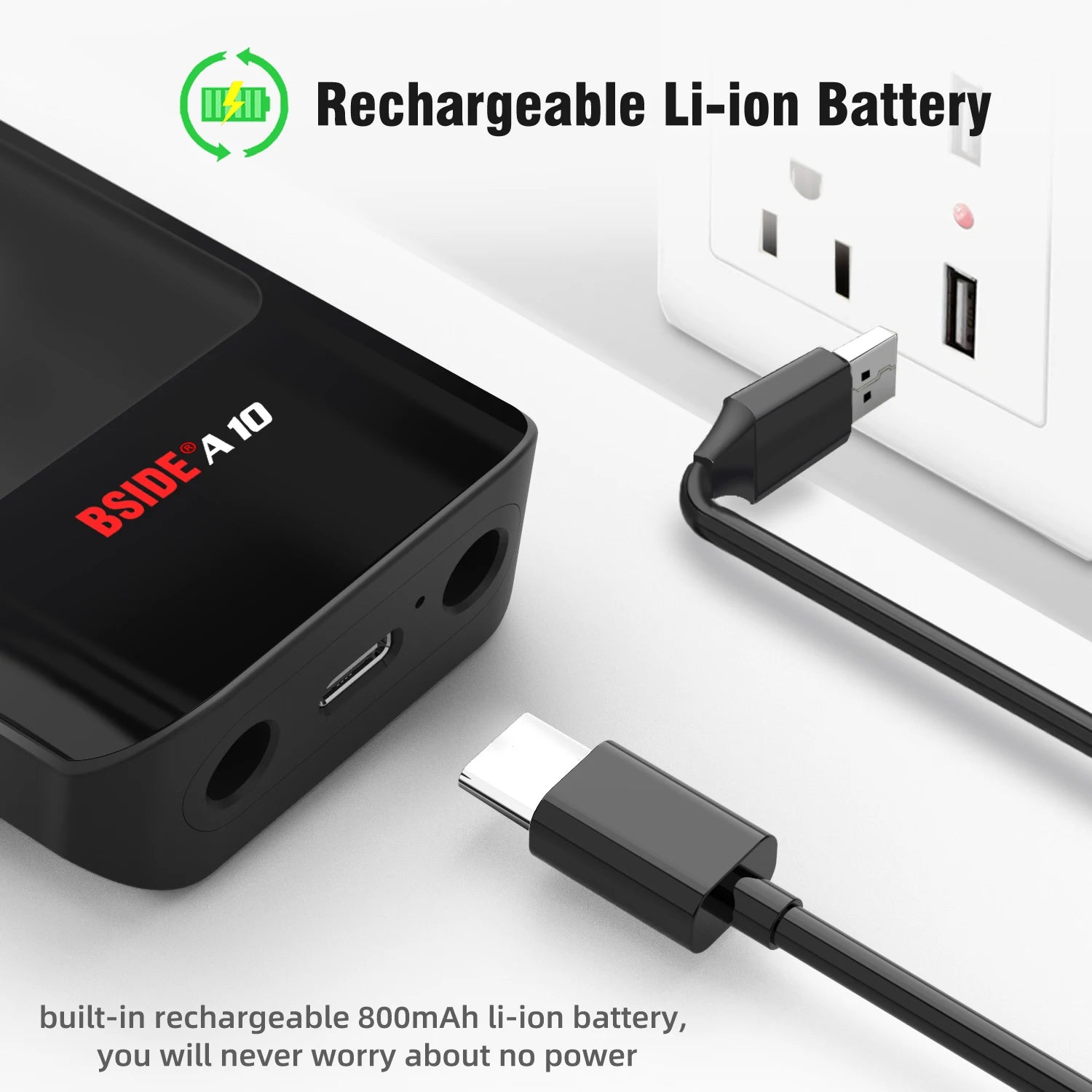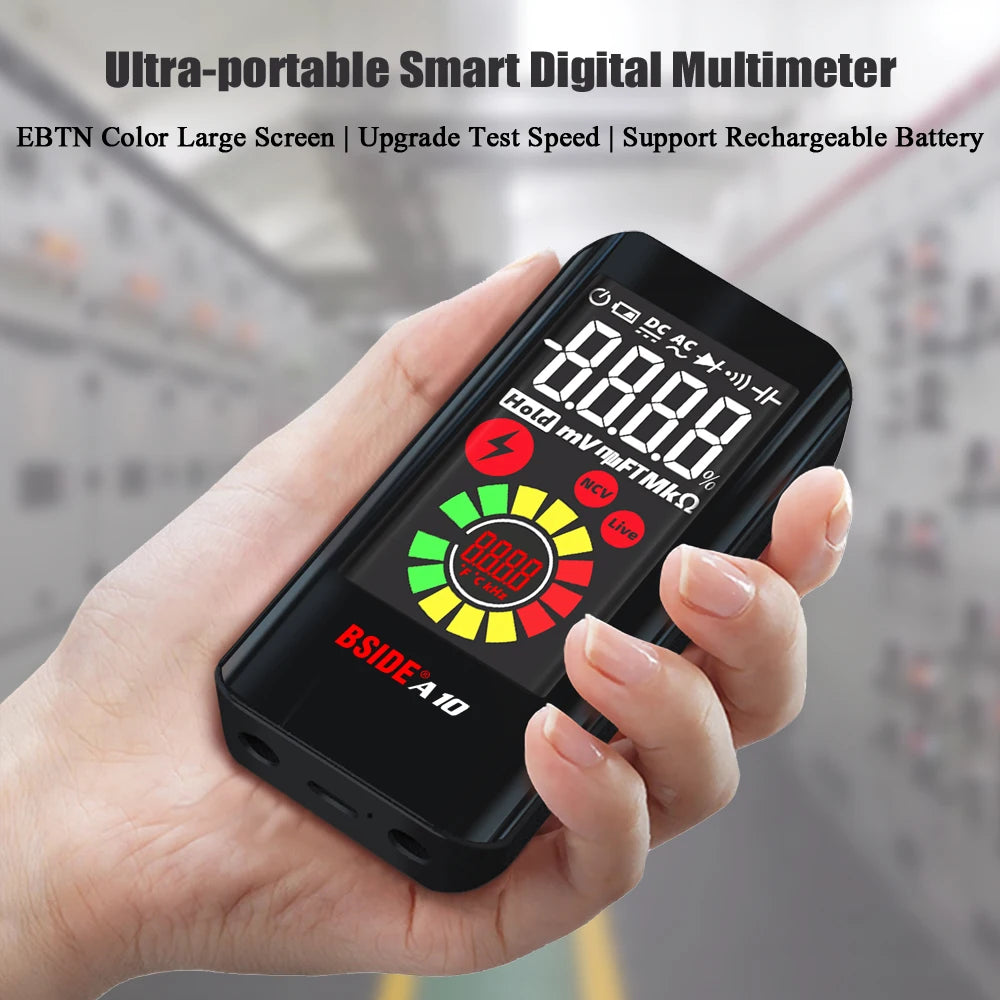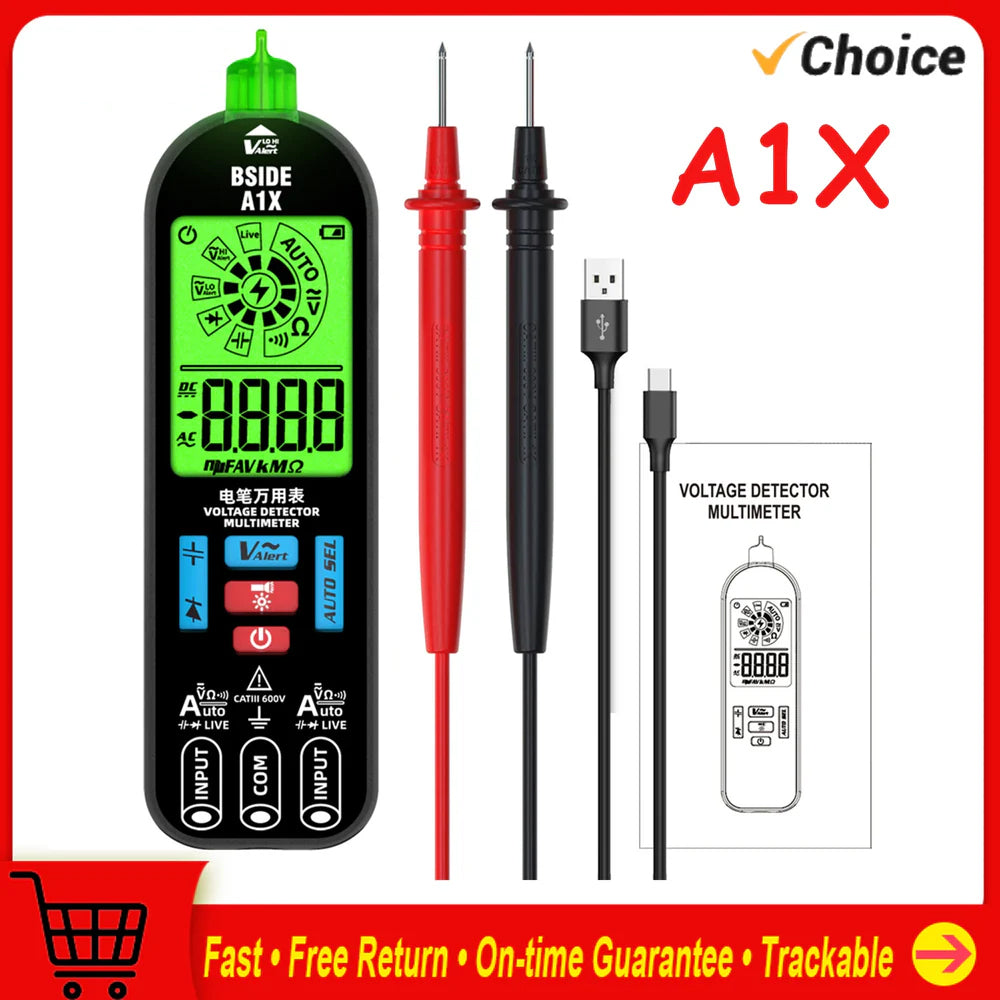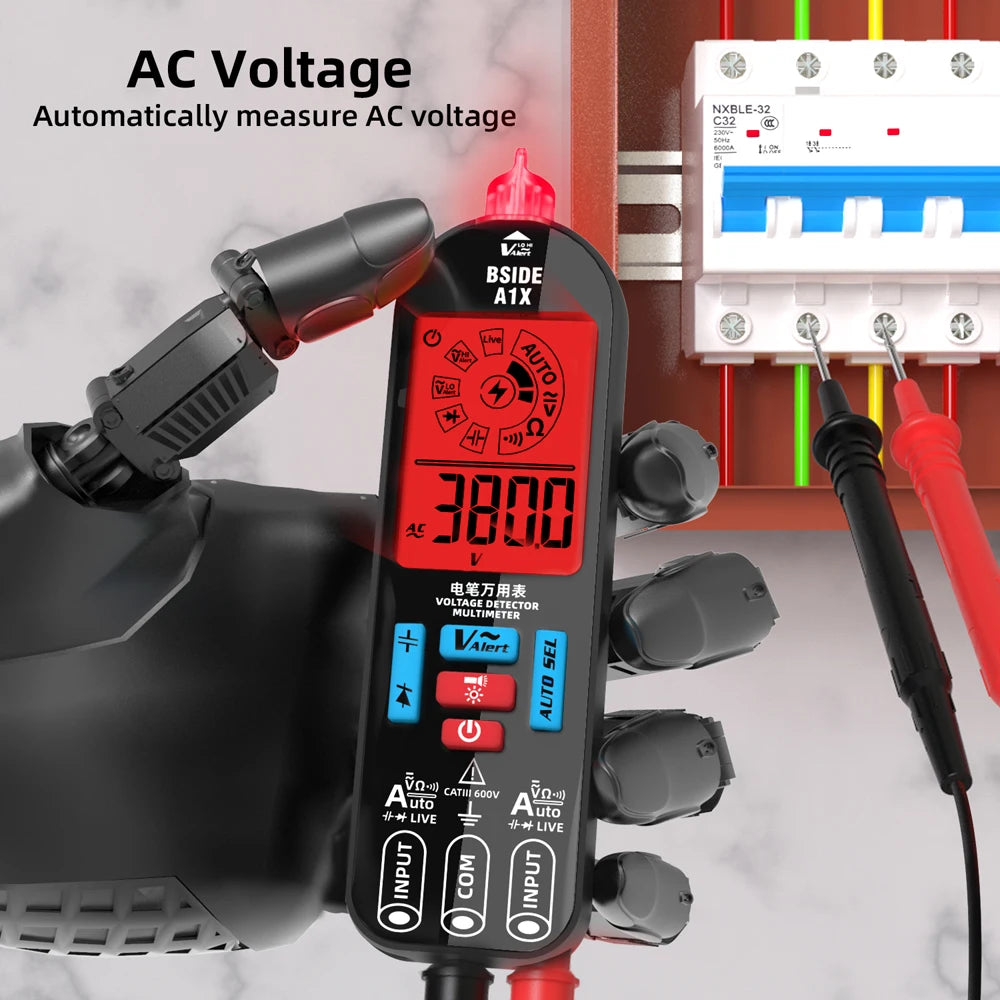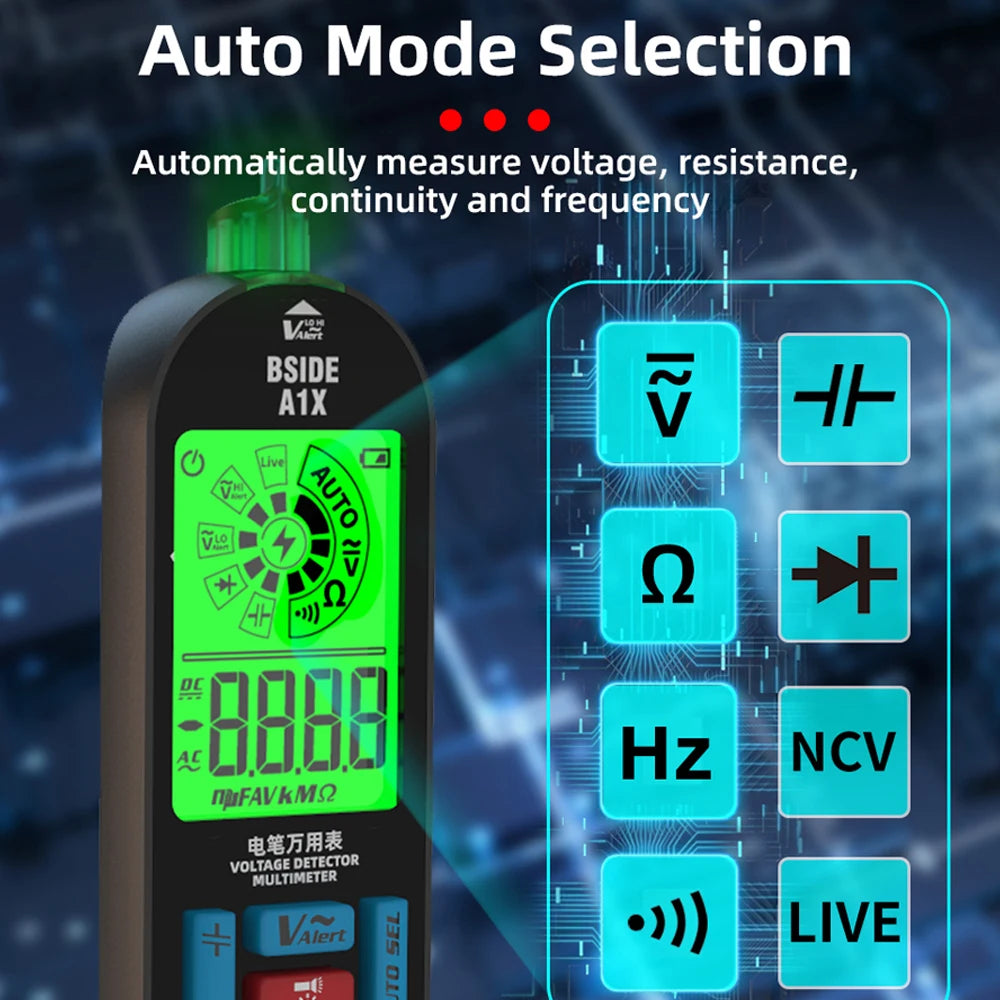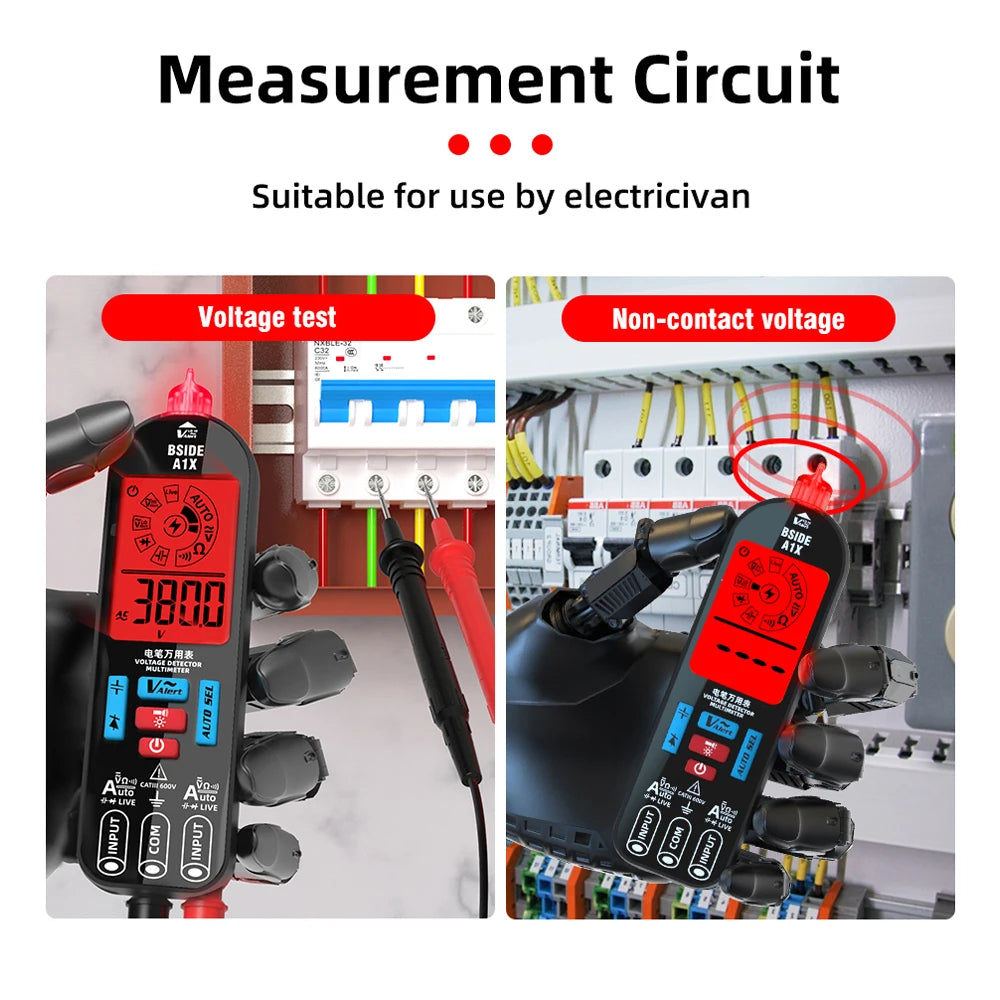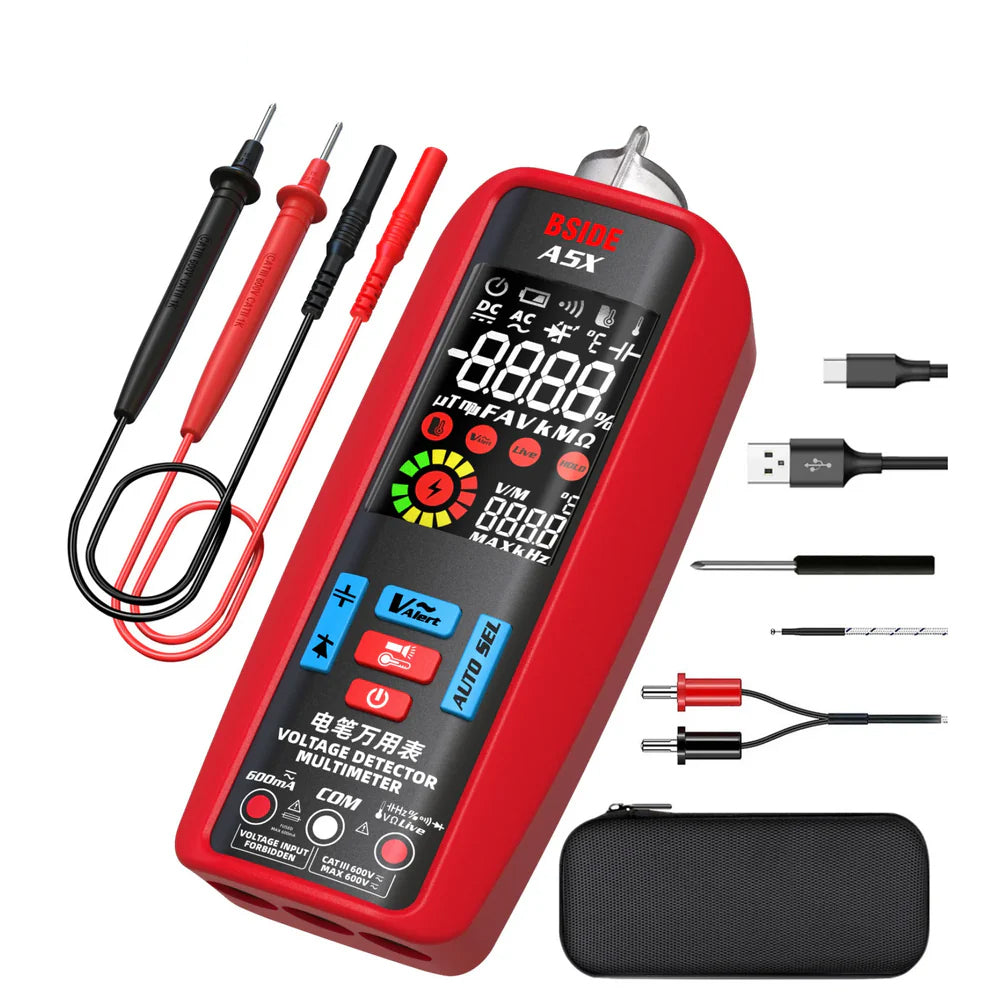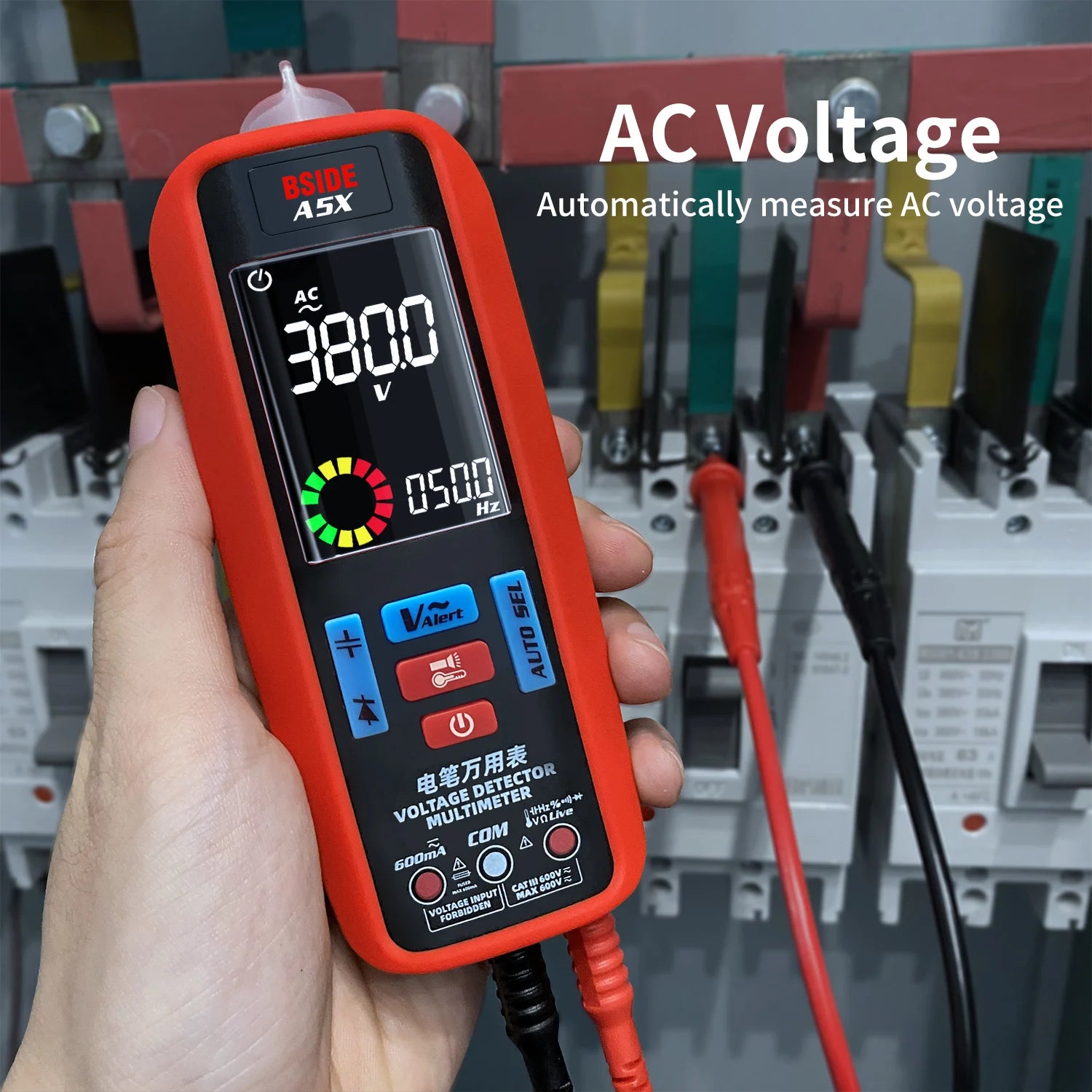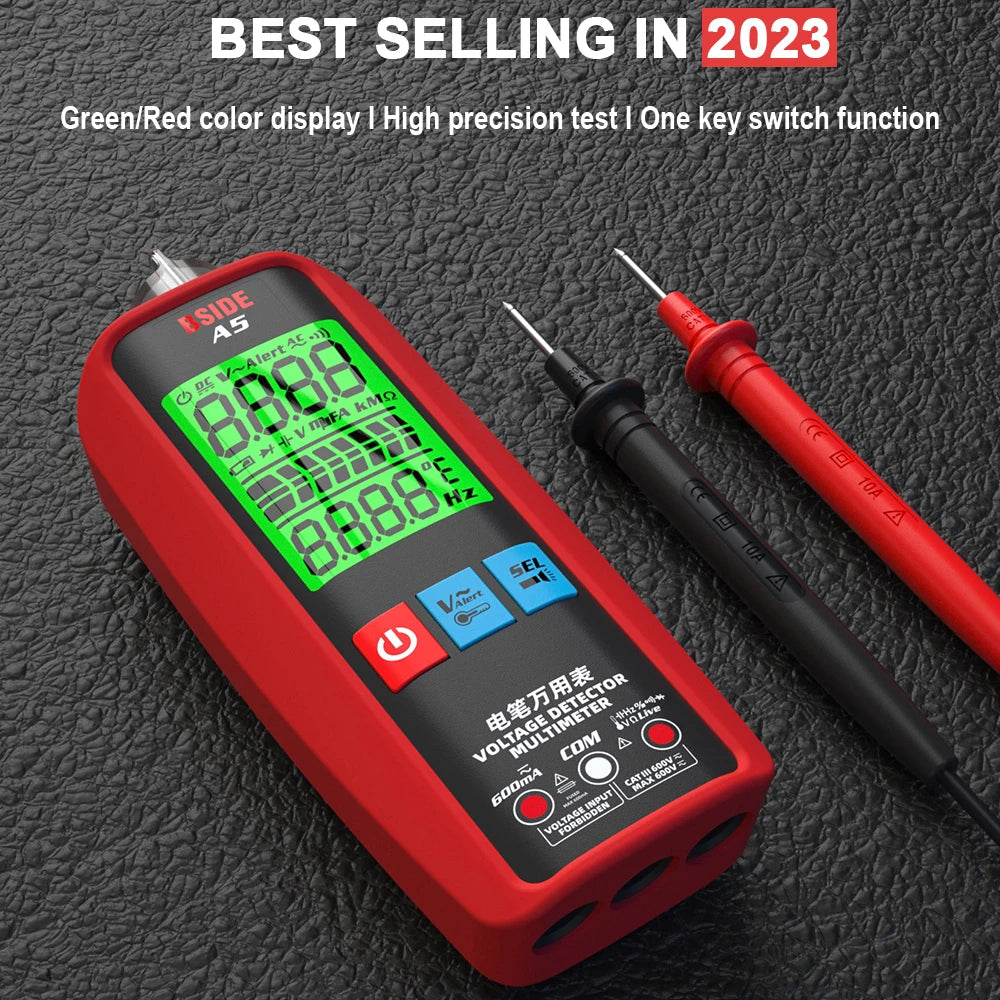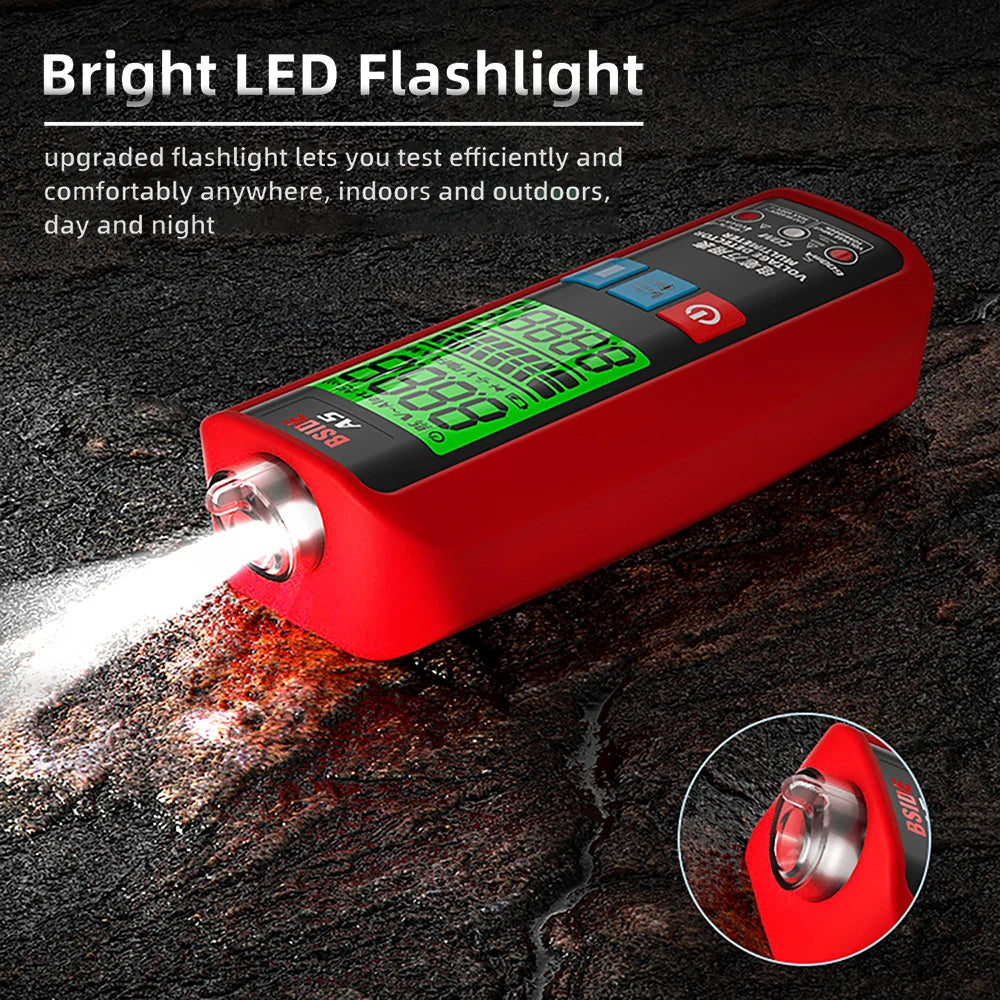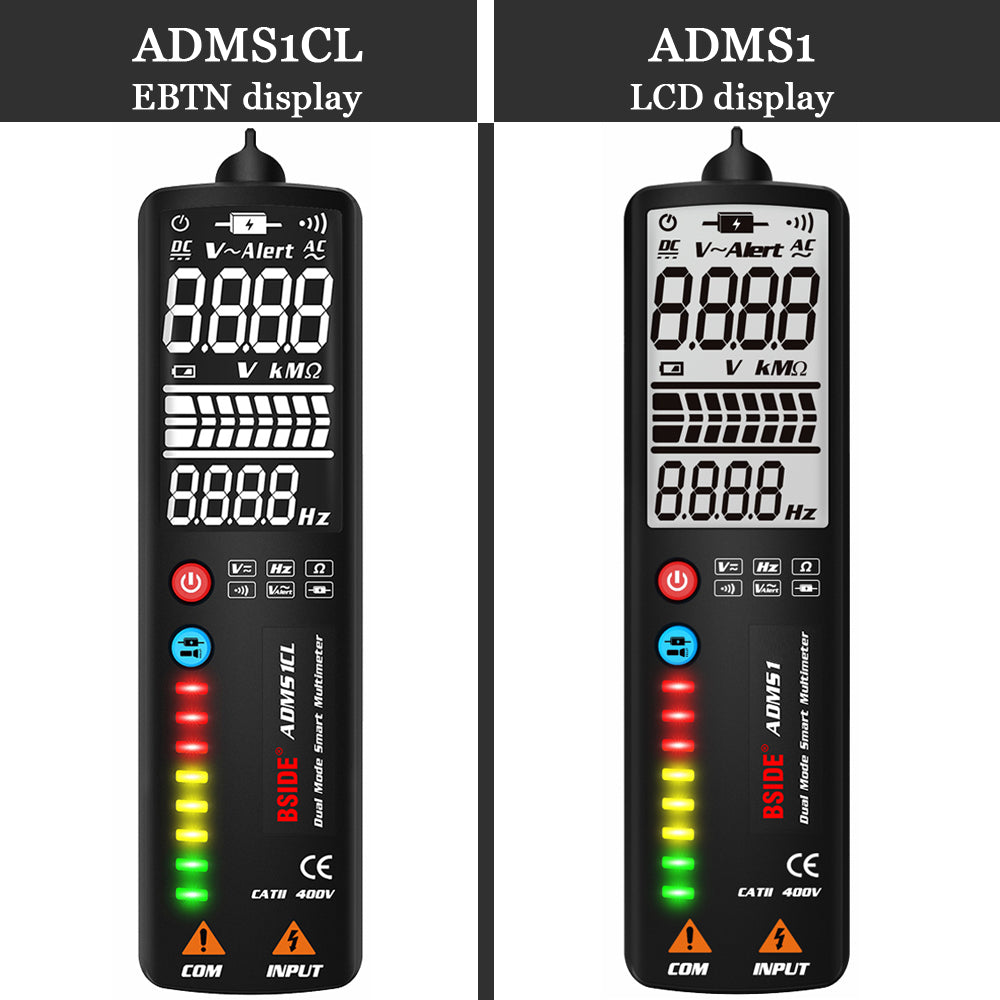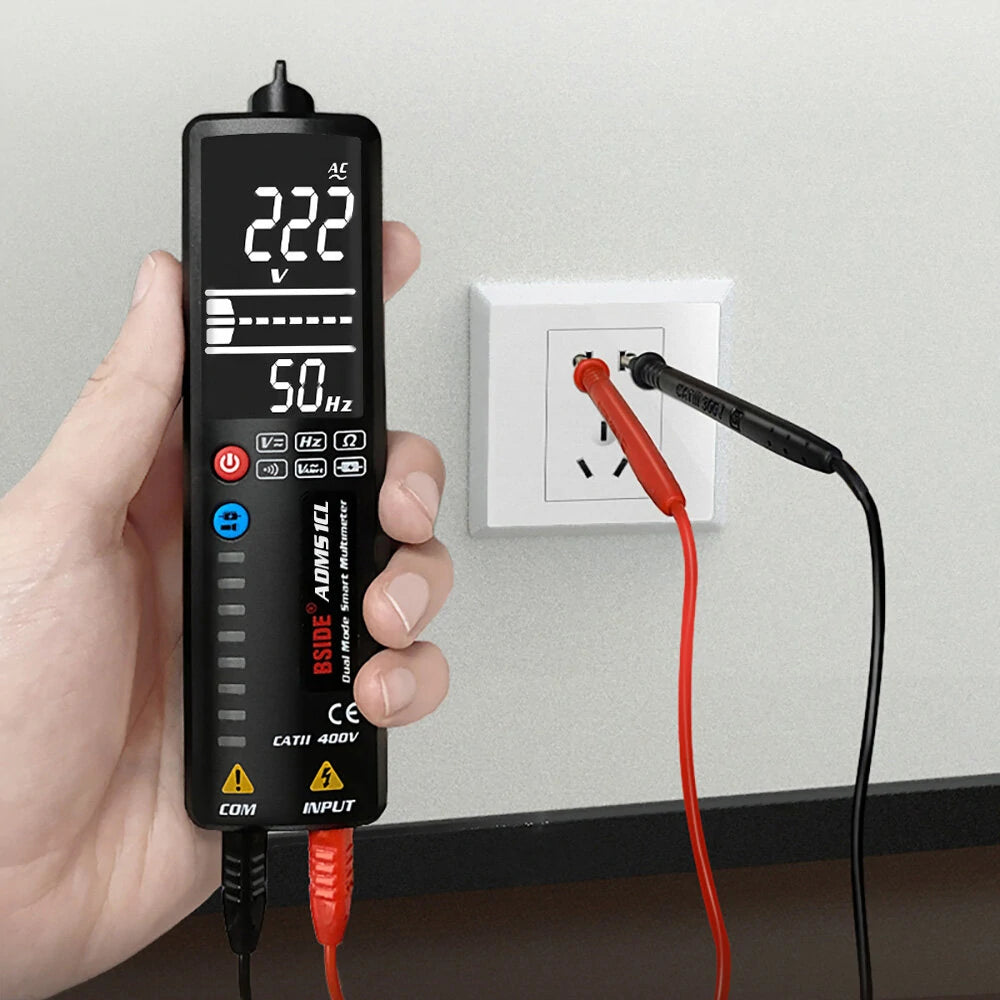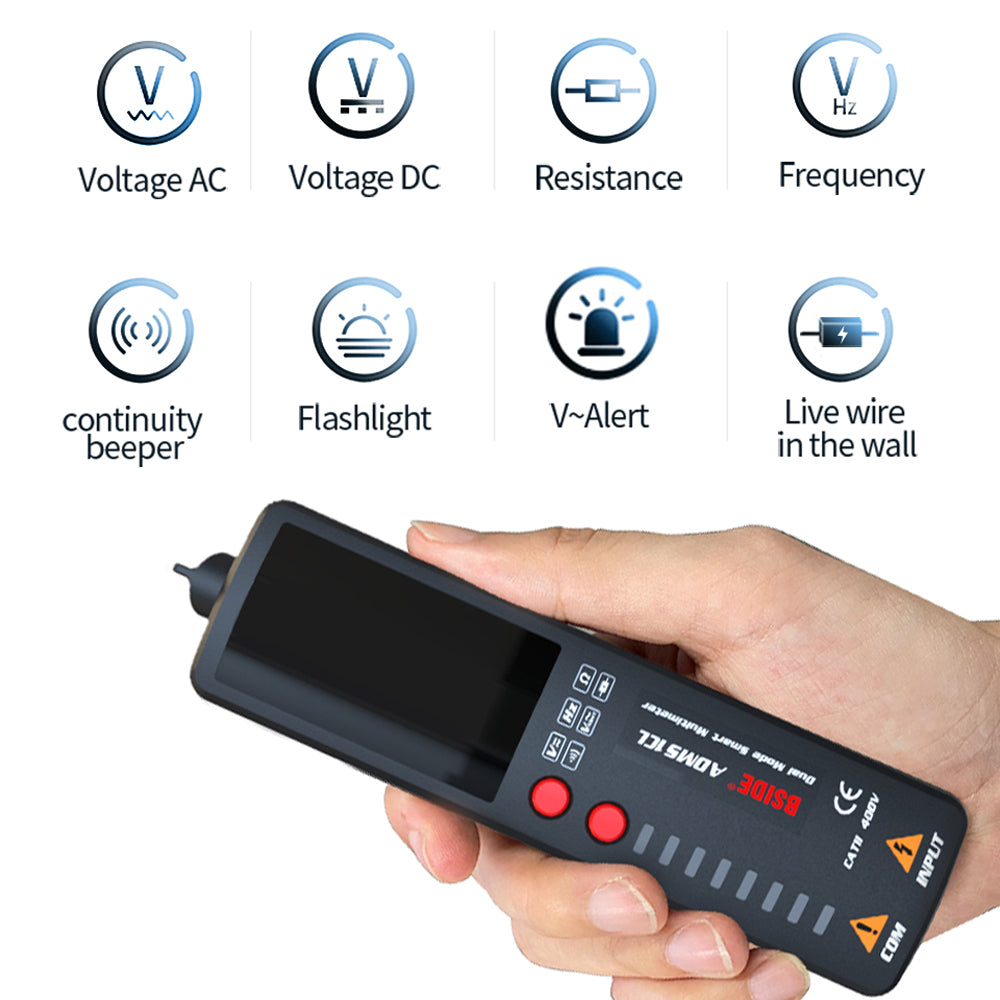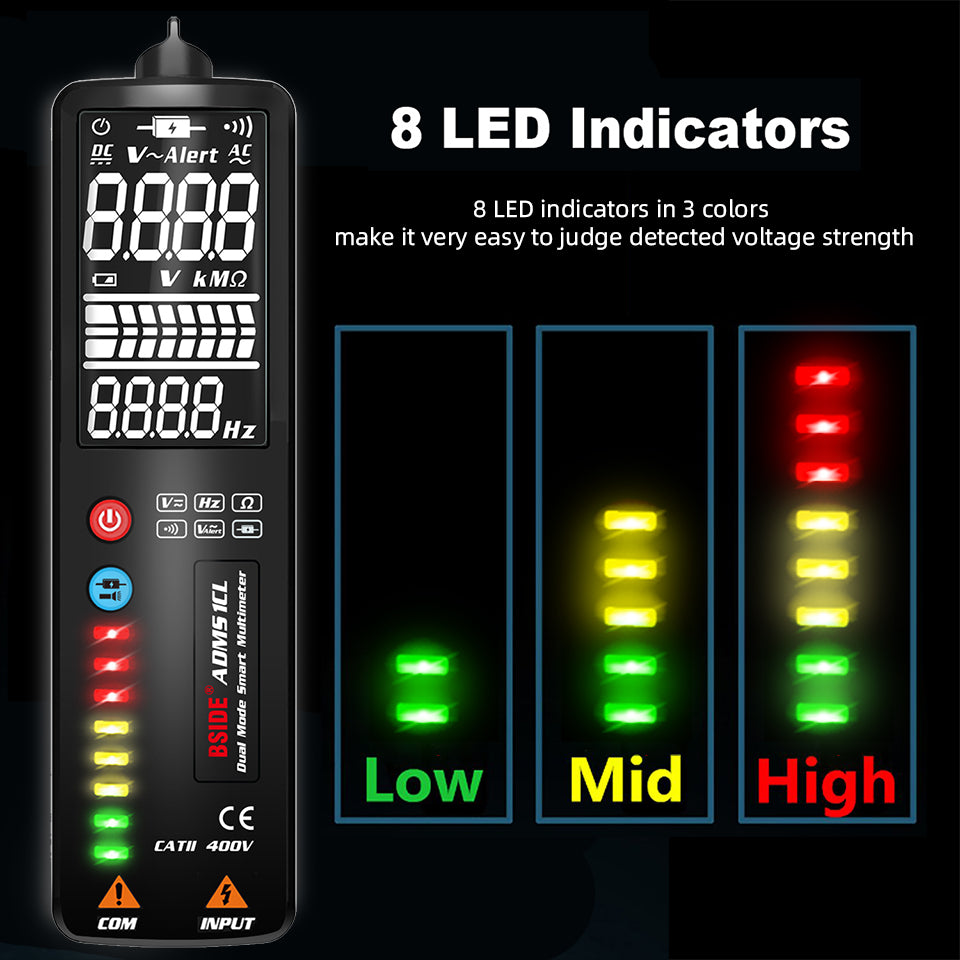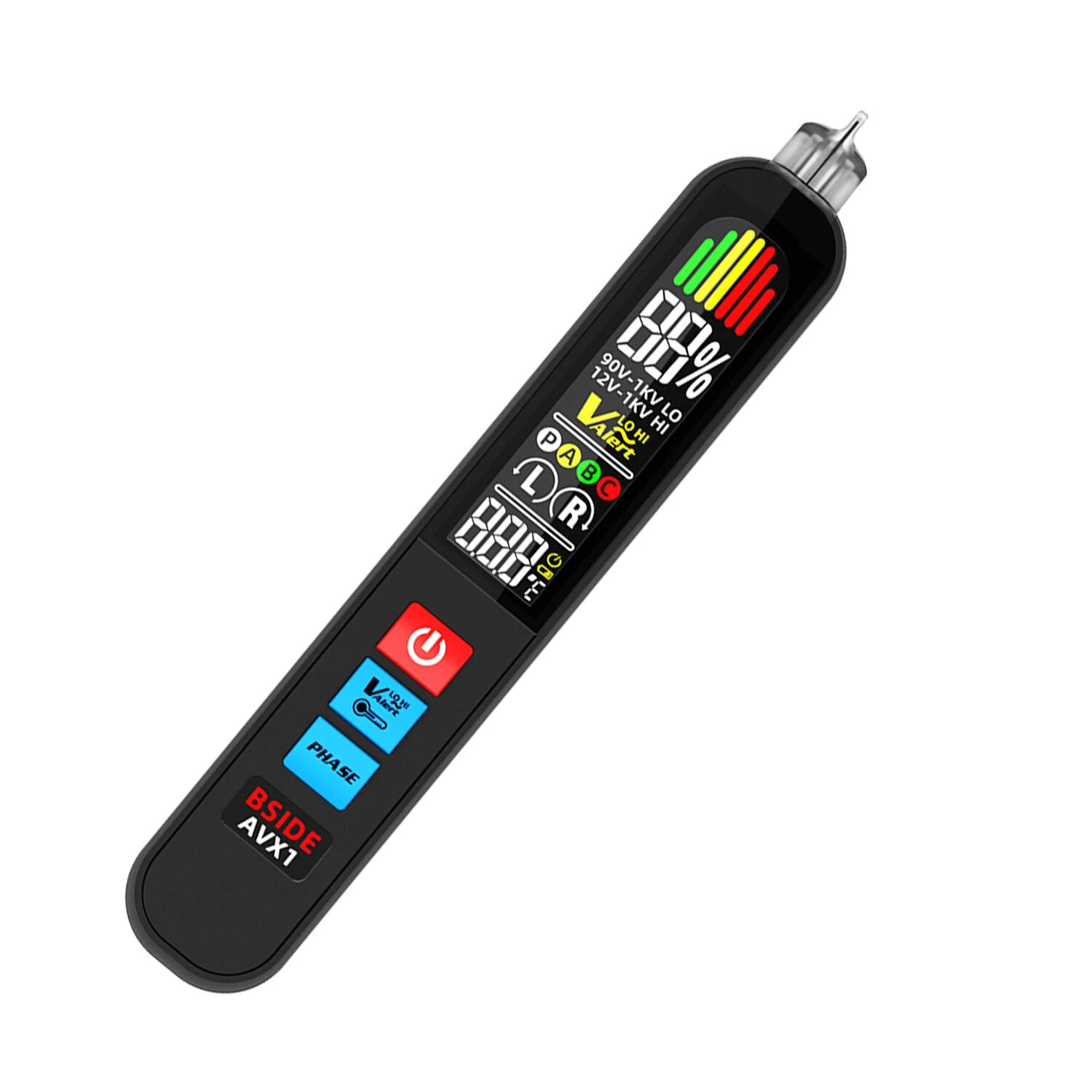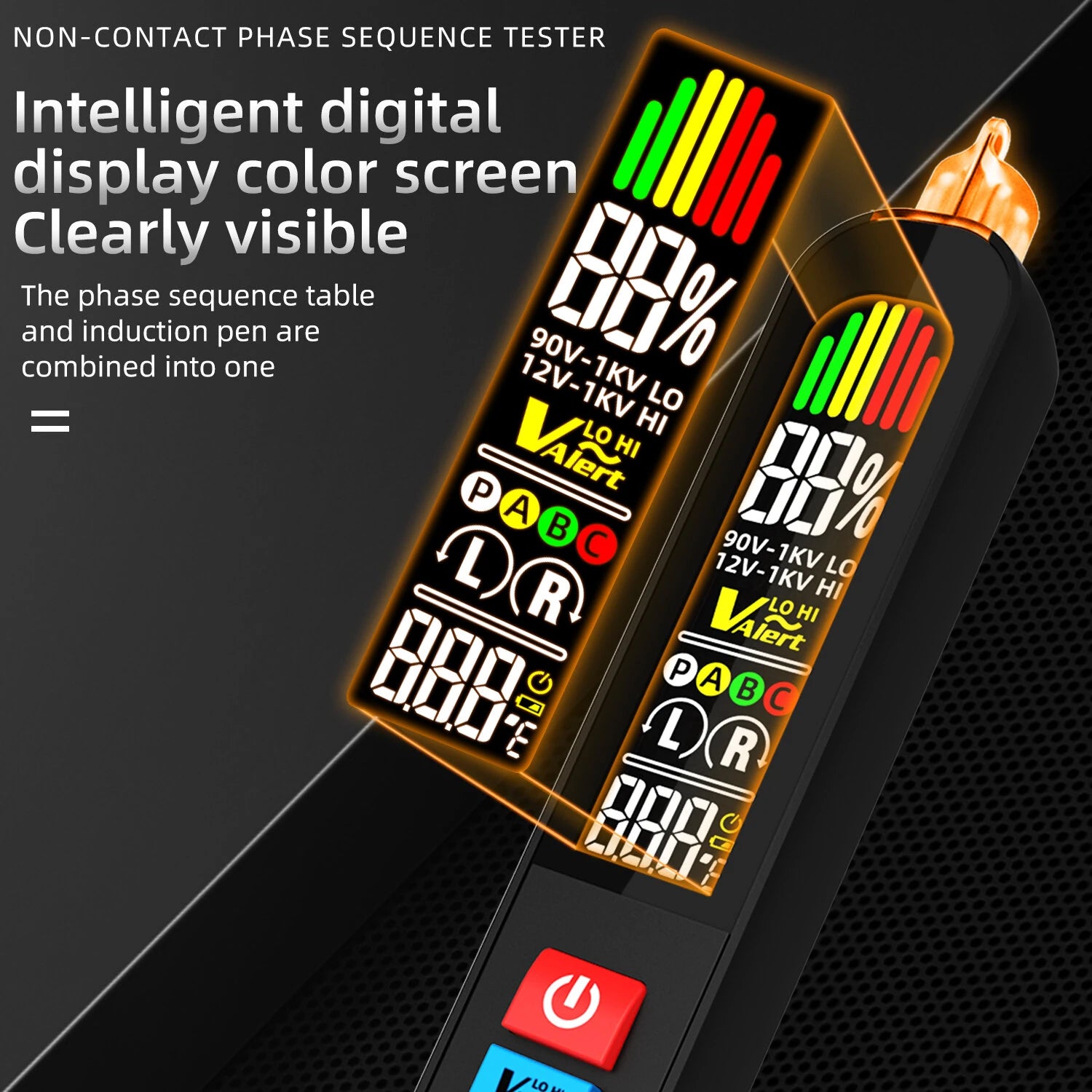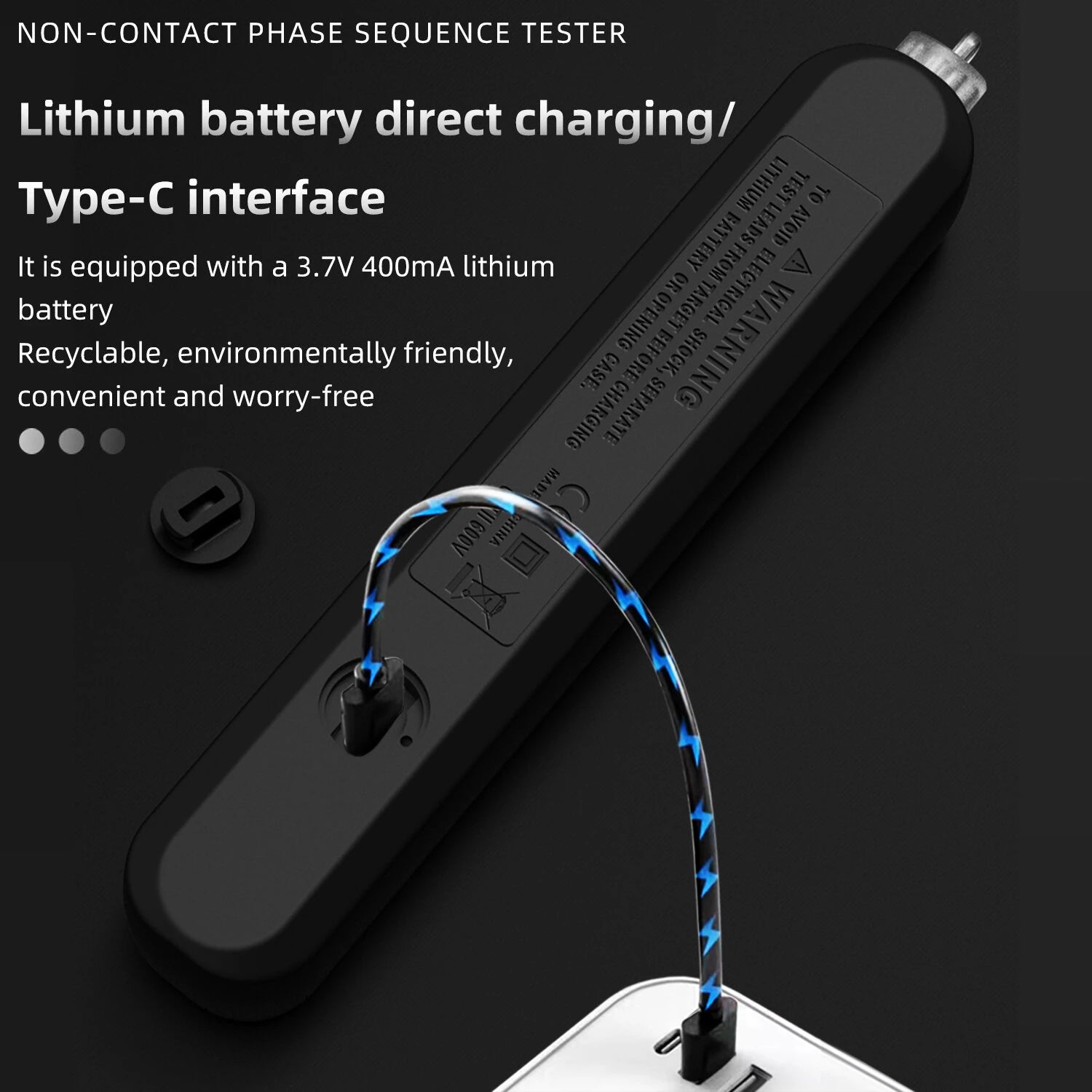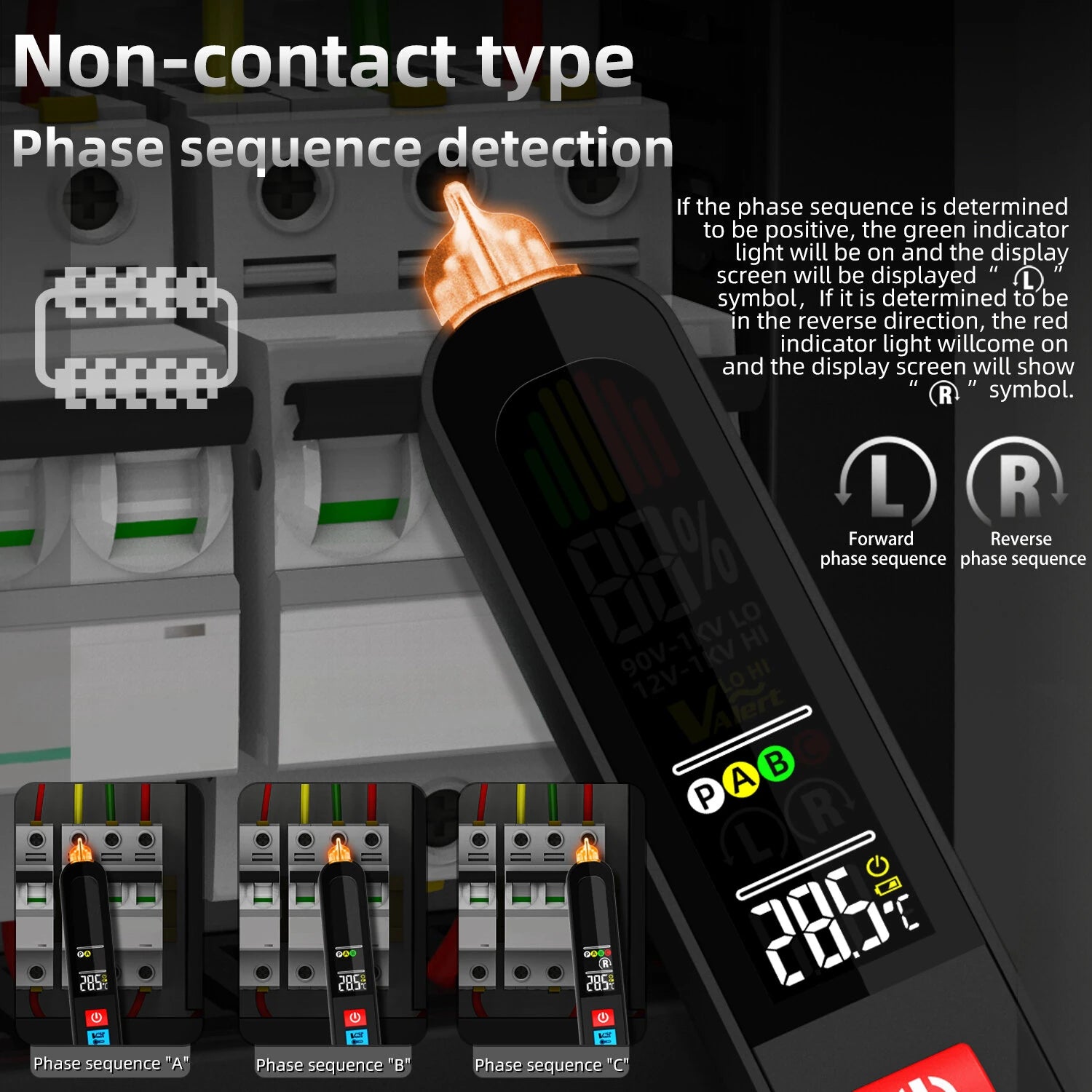🧰 What Can You Measure with a Clamp Meter?
Modern digital clamp meters—like those from BSIDE—can typically measure:
-
✅ AC/DC Current (Amps)
-
✅ Voltage (V)
-
✅ Resistance (Ohms)
-
✅ Continuity
-
✅ Frequency (Hz)
-
✅ Some models: Capacitance, Temperature, NCV, etc.
🪛 How to Use a Clamp Meter to Measure Current
Here’s how to measure current (Amps), the main feature of a clamp meter:
Step-by-Step:
-
Turn the Dial to “A~” or “A⎓”
-
A~ = AC current
-
A⎓ = DC current (if supported)
-
-
Open the Clamp Jaw
-
Press the trigger to open the clamp.
-
-
Isolate a Single Conductor
-
Only clamp around one wire, not the entire cable. Clamping both live and neutral wires will cancel out the reading.
-
-
Clamp Around the Wire
-
Position the wire in the center of the clamp for best accuracy.
-
-
Read the Display
-
The screen shows the current flowing through the conductor, in Amps.
-
⚡ How to Measure Voltage with a Clamp Meter
Most clamp meters also have multimeter functions:
-
Set dial to V~ (AC) or V⎓ (DC)
-
Insert the test leads into COM and V ports
-
Place the probes on the test points (e.g., outlet, battery)
-
Read the voltage on the screen
📌 Note: Clamp is not used when measuring voltage or resistance.
✅ Tips for Accurate Readings
-
Clamp only one wire at a time (not the whole cable)
-
For low current, use a model with high sensitivity (like BSIDE SH7)
-
Center the wire inside the clamp
-
Avoid magnetic interference or nearby high-voltage sources
-
For DC current, you may need to press the “Zero” or “Rel” button before measuring
🔒 Safety Precautions
-
Never exceed the rated amp or voltage limits
-
Always test on a known circuit before live work
-
Use insulated gloves and safety gear when working on panels
-
Do not use in wet or unstable environments
🔍 Best Clamp Meter for Beginners: BSIDE SH7
The BSIDE SH7 is a smart, affordable clamp meter packed with features:
-
✅ AC/DC Current up to 1000A
-
✅ Smart Auto-ID Mode
-
✅ Thermal Imaging Camera
-
✅ NCV Detection & Live Line Alert
-
✅ Dual Display + Flashlight
-
✅ Rechargeable Battery
Perfect for HVAC techs, electricians, or home DIYers who want safe, accurate, and fast diagnostics.
🏁 Conclusion
Clamp meters are essential tools for quickly and safely measuring current in live circuits. Whether you're troubleshooting an HVAC system or diagnosing a home outlet, learning how to use a clamp meter will make your electrical work more efficient and secure.
🧰 What Can You Measure with a Clamp Meter?
Modern digital clamp meters—like those from BSIDE—can typically measure:
-
✅ AC/DC Current (Amps)
-
✅ Voltage (V)
-
✅ Resistance (Ohms)
-
✅ Continuity
-
✅ Frequency (Hz)
-
✅ Some models: Capacitance, Temperature, NCV, etc.
🪛 How to Use a Clamp Meter to Measure Current
Here’s how to measure current (Amps), the main feature of a clamp meter:
Step-by-Step:
-
Turn the Dial to “A~” or “A⎓”
-
A~ = AC current
-
A⎓ = DC current (if supported)
-
-
Open the Clamp Jaw
-
Press the trigger to open the clamp.
-
-
Isolate a Single Conductor
-
Only clamp around one wire, not the entire cable. Clamping both live and neutral wires will cancel out the reading.
-
-
Clamp Around the Wire
-
Position the wire in the center of the clamp for best accuracy.
-
-
Read the Display
-
The screen shows the current flowing through the conductor, in Amps.
-
⚡ How to Measure Voltage with a Clamp Meter
Most clamp meters also have multimeter functions:
-
Set dial to V~ (AC) or V⎓ (DC)
-
Insert the test leads into COM and V ports
-
Place the probes on the test points (e.g., outlet, battery)
-
Read the voltage on the screen
📌 Note: Clamp is not used when measuring voltage or resistance.
✅ Tips for Accurate Readings
-
Clamp only one wire at a time (not the whole cable)
-
For low current, use a model with high sensitivity (like BSIDE SH7)
-
Center the wire inside the clamp
-
Avoid magnetic interference or nearby high-voltage sources
-
For DC current, you may need to press the “Zero” or “Rel” button before measuring
🔒 Safety Precautions
-
Never exceed the rated amp or voltage limits
-
Always test on a known circuit before live work
-
Use insulated gloves and safety gear when working on panels
-
Do not use in wet or unstable environments
🔍 Best Clamp Meter for Beginners: BSIDE SH7
The BSIDE SH7 is a smart, affordable clamp meter packed with features:
-
✅ AC/DC Current up to 1000A
-
✅ Smart Auto-ID Mode
-
✅ Thermal Imaging Camera
-
✅ NCV Detection & Live Line Alert
-
✅ Dual Display + Flashlight
-
✅ Rechargeable Battery
Perfect for HVAC techs, electricians, or home DIYers who want safe, accurate, and fast diagnostics.
🏁 Conclusion
Clamp meters are essential tools for quickly and safely measuring current in live circuits. Whether you're troubleshooting an HVAC system or diagnosing a home outlet, learning how to use a clamp meter will make your electrical work more efficient and secure.

